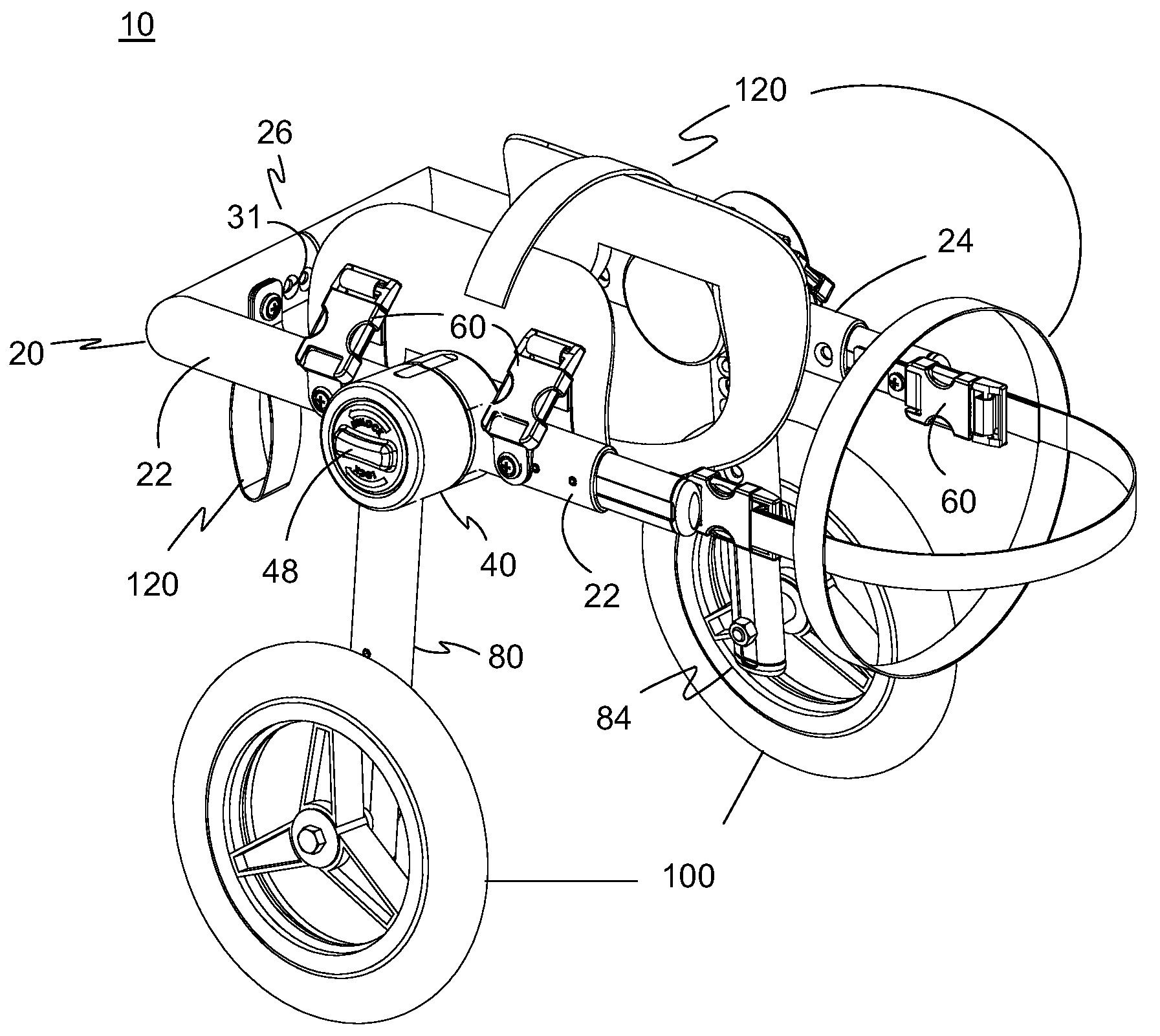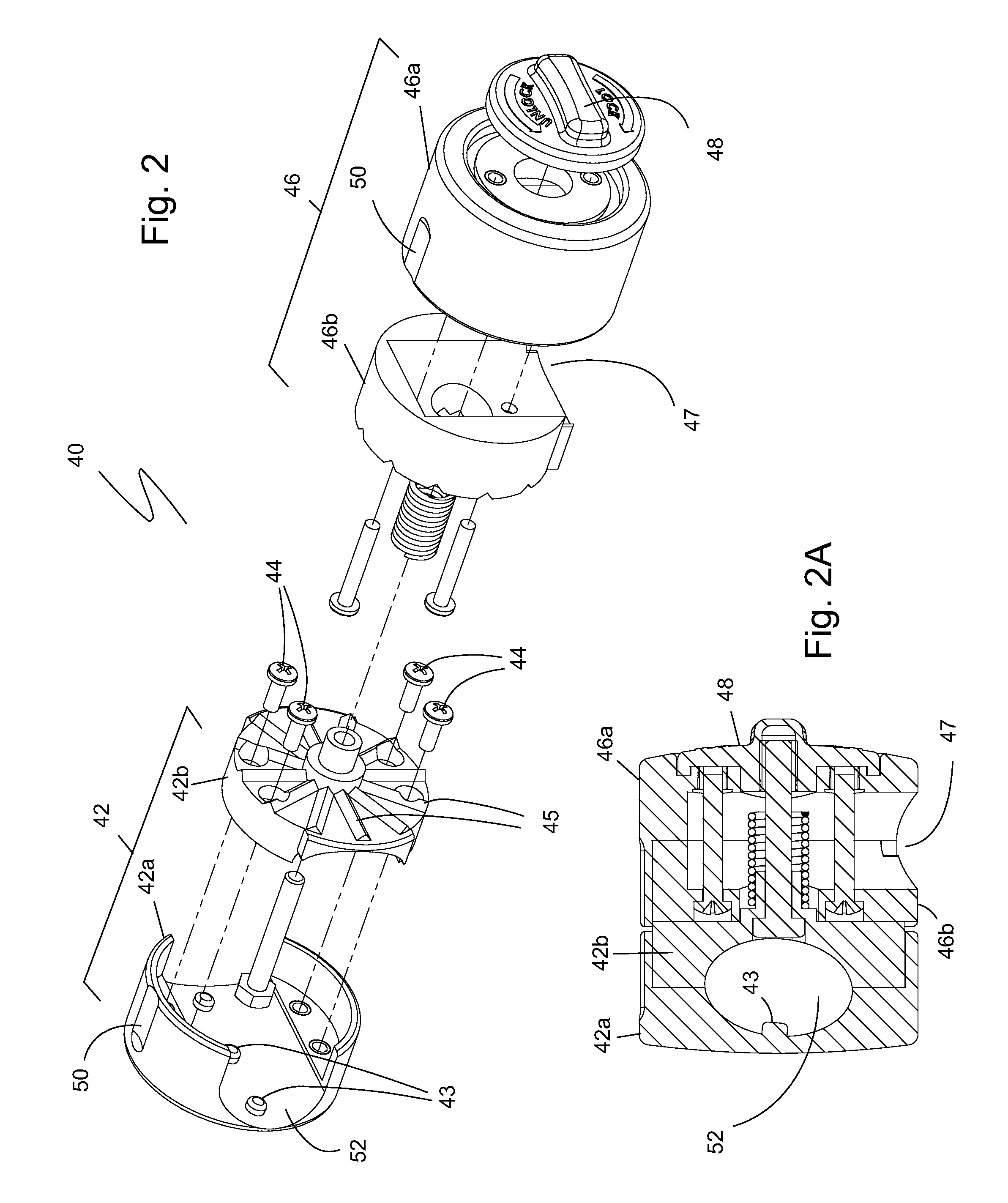Adjustable wheelchair for pets
a wheelchair and pet technology, applied in animal husbandry, taming and training devices, medical science, etc., can solve the problems of increased health and care problems, poor experience for pet owners, and many dogs and cats losing the use of hind legs, so as to facilitate proper sizing, dampen wheel impact, and easy selection
- Summary
- Abstract
- Description
- Claims
- Application Information
AI Technical Summary
Benefits of technology
Problems solved by technology
Method used
Image
Examples
Embodiment Construction
[0035]The preferred embodiment(s) of the present invention is illustrated in FIGS. 1-10. The wheelchair for four-legged animals 10 is shown in FIG. 1. Wheelchair 10 includes a harness support frame 20, a first and second knuckle clamp assembly 40, a plurality of harness connectors 60, first and second leg assemblies 80, first and second wheels 100 attached adjacent to the distal end 90 of first and second leg assemblies 80, and a harness assembly 120. Harness support frame 20 includes first and second lateral supports 22, 24 that are spaced from each other. First and second lateral supports 22, 24 are connected to each other at frame proximal end 26 by a width extender 28 (shown in FIG. 2). Proximal end 26 gives harness support frame 20 a U-shaped structure that typically receives the hindquarters of an animal needing support. First and second lateral supports 22, 24 include a plurality of apertures 31 that are used in conjunction with a spring button for adjusting the length and wi...
PUM
 Login to View More
Login to View More Abstract
Description
Claims
Application Information
 Login to View More
Login to View More - R&D
- Intellectual Property
- Life Sciences
- Materials
- Tech Scout
- Unparalleled Data Quality
- Higher Quality Content
- 60% Fewer Hallucinations
Browse by: Latest US Patents, China's latest patents, Technical Efficacy Thesaurus, Application Domain, Technology Topic, Popular Technical Reports.
© 2025 PatSnap. All rights reserved.Legal|Privacy policy|Modern Slavery Act Transparency Statement|Sitemap|About US| Contact US: help@patsnap.com



